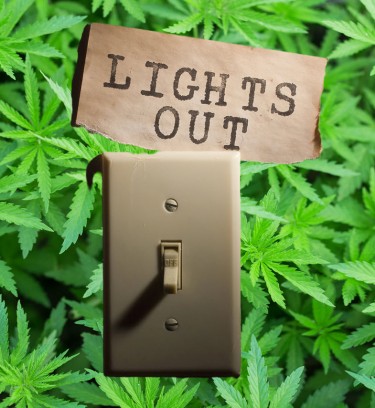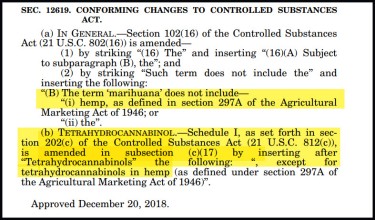Cannabis News
Marijuana Legalization Cuts Down on Booze-Related Pedestrain Deaths Says New Study
Published
1 year agoon
By
admin

Marijuana Legalization Linked to Reduction In Booze-Related Deaths of Pedestrians
According to data, around 1 in every 7 pedestrian deaths is caused by a drunk driver.
The National Highway Traffic Safety Administration states that some 32 people are killed due to drunk driving everyday. This equates to one death every 45 minutes, a senseless and completely unnecessary preventable death. The fact that alcohol consumption greatly impairs drivers has long been known, yet people continue to do it. Booze alters one’s judgment, severely impacts one’s ability to concentrate, affects coordination and vision – all of which contribute to impaired driving which can kill pedestrians.
However, with cannabis legalization, more people are consuming pot as a substitute to alcohol. And that has helped to reduce pedestrian deaths caused by impaired driving.
A new study conducted by two researchers at the Florida Polytechnic University analyzed the association between cannabis legalization and pedestrian deaths from 1985 to 2019. The study, which was published in the International Association of Traffic and Safety Sciences Research journal, found that both recreational and medical cannabis legalization were associated with reductions in pedestrian fatalities, including those that were linked to alcohol.
“As of 2019, we find that liberalization has been associated with lower pedestrian fatalities, not higher. Further, the pattern is consistent with the alcohol substitution hypothesis. Specifically, the induced decline in alcohol related fatalities following liberalization is large enough to more than compensate for any additional fatalities due to marijuana consumption,” concluded the researchers.
Older Studies
But access to legal marijuana and the reduction of traffic fatalities is not a new association by any means. Studies as far back as 2011 have found the same results. A November 2011 study by researchers at the University of Colorado Denver found that medical marijuana laws have been linked to a 9% decrease in traffic fatalities, as well as a 5% drop in beer sales. For the study, they analyzed data from several sources such as the National Survey on Drug Use and Health, the Fatality Analysis Reporting System, and the Behavioral Risk Factor Surveillance System.
“Our research suggests that the legalization of medical marijuana reduces traffic fatalities through reducing alcohol consumption by young adults,” explains Daniel Rees, a University of Colorado Denver professor of economics. This is the first study to ever analyze any link between medical marijuana laws and traffic fatalities.
“We were astounded by how little is known about the effects of legalizing medical marijuana,” says Rees. “We looked into traffic fatalities because there is good data, and the data allow us to test whether alcohol was a factor.”
According to co-author D. Mark Anderson, these findings are important when one considers it from the lawmaking perspective. “Traffic fatalities are an important outcome from a policy perspective because they represent the leading cause of death among Americans aged five to 34,” he says.
Meanwhile, another study in 2013 yielded similar results. Researchers from the Montana State University, University of Colorado, and the University of Oregon examined data on traffic deaths and alcohol consumption taken from 1990 through 2010.
“Using individual-level data from the Behavioral Risk Factor Surveillance System (BRFSS)…, we find that MMLs (medical marijuana laws) are associated with decreases in the probability of an individual having consumed alcohol in the past month, binge drinking, and the number of drinks consumed,” they said.
In addition, the researchers acknowledge that the reduction in alcohol consumption is probably responsible for the decrease in alcohol-related traffic deaths.
“Using data from FARS (federal Fatality Analysis Reporting System) for the period 1990-2010, we find that traffic fatalities fall by 8-11 percent during the first full year after legalization,” they wrote. “Why does legalizing medical marijuana reduce traffic fatalities? Alcohol consumption appears to play a key role. The legalization of medical marijuana is associated with a 7.2 percent decrease in traffic fatalities in which there was no reported alcohol involvement, but this estimate is not statistically significant at conventional levels. In comparison, the legalization of medical marijuana is associated with a 13.2 percent decrease in fatalities in which at least one driver involved had a positive BAC (blood alcohol concentration) level,” they added.
“The negative relationship between the legalization of medical marijuana and traffic fatalities involving alcohol lends support to the hypothesis that marijuana and alcohol are substitutes,” they concluded.
Cannabis Is A Better Alternative To Alcohol
Improved access to legal marijuana laws, whether medical or recreational, is reason enough for more people to give up alcohol and use pot instead. It’s bad enough that people on the road drunk driving can kill thousands, but it also harms anyone who consumes it especially with chronic use or binge drinking.
More people are seeing the benefits of consuming marijuana instead. It can not only help reduce alcohol intake, but it can greatly eliminate the dependency on it and improve families and societies as a whole. Whereas, alcohol was notorious for tearing families apart and breaking up relationships – cannabis is a better substitute instead. And when it comes to driving, always drive sober – it is both dangerous and illegal to drive under the influence, no matter what the substance is.
MORE ON VEHICLES AND WEED, READ ON..
TRAFFIC ACCIDENTS DO NOT INCREASE WITH LEGALIZATION SAYS INSURANCE COMPANIES
You may like
Cannabis News
Forget Croptober – How to Grow Cannabis So You Can Crop Plants 12 Months a Year
Published
21 hours agoon
June 1, 2024By
admin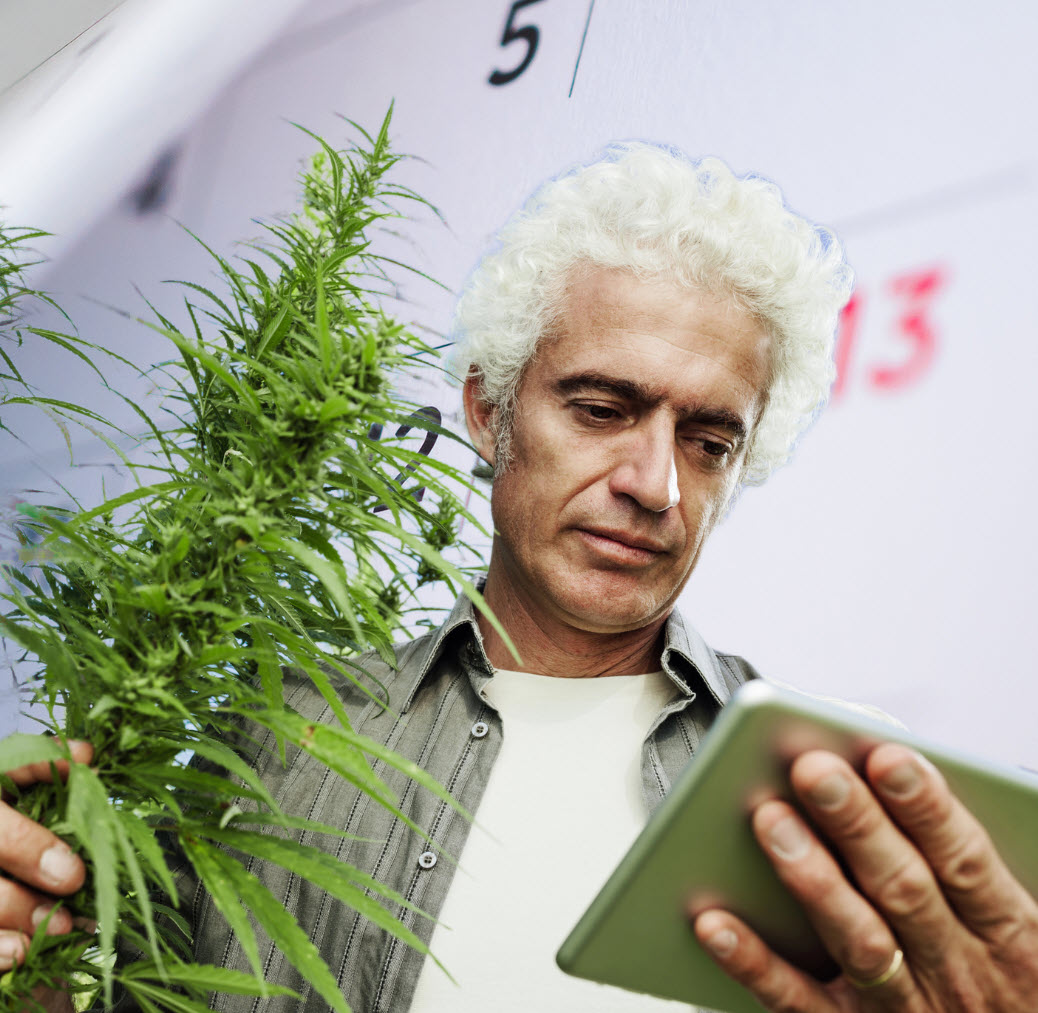
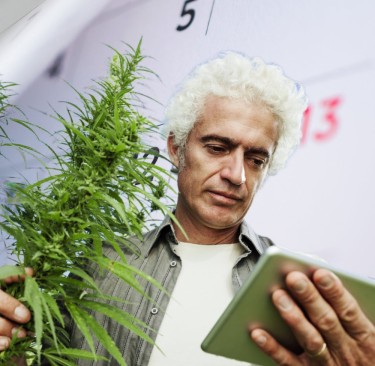
Why settle for one cannabis harvest a year when you can have multiple? Imagine having your own freshly harvested cannabis available whenever you want. Growers can achieve this by maintaining a year-round garden with a system called perpetual harvest. The concept involves harvesting small amounts of cannabis multiple times throughout the year, rather than one large batch annually. Depending on your setup, you could harvest every week, two weeks, a month, or at any interval you prefer.
To keep a steady supply, consider implementing a perpetual harvest system.
For personal growers, this ensures your stash is always stocked with fresh buds. For commercial growers, it means a consistent income and continuous employment for your team.
Perpetual harvests eliminate the waiting game, keeping you consistently busy without the stress of everything needing to be done all at once.
How to Harvest Cannabis Multiple Times Per Year
Attempting to grow cannabis plants as usual while aiming for multiple harvests will leave you tired and disappointed. You’ll need to work smarter and harder to achieve more than one crop per year, with your budget playing a significant role.
The key to multiple harvests lies in manipulating the flowering and vegetative processes and reorganizing (and possibly expanding) your growing space.
You’ll need ample room indoors or space for a greenhouse outdoors. Creating separate areas for seedlings, vegetative growth, and flowering is crucial. This separation ensures that the growing process for any set of plants isn’t hindered.
Ready to get started? Great! Let’s dive into how a perpetual cannabis harvest works.
Equipment and Supplies for a Perpetual Cannabis Harvest
To start your multi-harvest operation, you’ll need the following:
Extra Growing Area/Tent
You’ll need separate spaces for two groups of cannabis plants, each with different lighting schedules. This requires partitioning your growing area with a sturdy wall.
You can use one large grow tent or room, but you’ll need to install a wall and a door for access between the spaces. One area will be dedicated to the vegetative stage and the other to flowering plants. The vegetative area can be smaller since those plants need less space compared to the flowering room.
Weaker Lights
Since you’ll need a separate space with a different light schedule, you’ll need an additional set of lights. These don’t have to be as powerful because vegetative phase plants require less intense light than flowering plants.
Light-Proofing Supplies
To prevent light pollution from affecting flowering plants, ensure their space is thoroughly light-proofed. Use materials like garbage bags, thick boards, or other opaque materials to block out unwanted light.
Humidity, Temperature, and Air Circulation Supplies
With more plants in your space, you must carefully monitor humidity, temperature, and air circulation. Overcrowding can lead to issues like mold infestations. Adding an extra fan, vent, and thermometer/hygrometer will help maintain a safe environment for your cannabis.
Setting Up Your Grow Area
Once you have all your supplies, it’s time to set up your growing spaces.
Seedling / Vegetative Stage
Seedlings and veg-stage cannabis plants share the same light cycle requirements, so you can keep them in the same room. However, they should occupy different sections since they need different light intensities.
For seedlings, use small fluorescent T5 lamps placed directly overhead. These lamps should be on for 18 hours a day and off for 6 hours. This applies to clones as well, but clones also need heat pads underneath and humidity domes overhead.
Veg-stage plants need more powerful lights. While fluorescent T5s can work, metal halide (MH) or LED lights are preferable. Although MH and LED lights are more expensive and consume more electricity, they significantly boost yields, making them worth the investment.
Stage of Flowering
When your plants reach maturity, transfer them to a room with LED or high-pressure sodium (HPS) lighting. A 12-hour on/off cycle may be set on these lamps to replicate the seasonal variations in natural sunshine.
Furthermore, confirm that fans and vents are fitted to control temperature and humidity. An atmosphere that is conducive to healthy growth must have adequate ventilation.
Crop Rotation
The real art of a perpetual harvest lies in managing crop rotation effectively.
When your first set of plants enters the flowering stage, your work is far from over. You need to immediately prepare clones or newly germinated seeds to take their place in the vegetative space. This cycle depends on harvesting the first set of plants before the new plants are ready to begin flowering.
Timing is Everything
Before you start growing, choose seeds based on their flowering times. The vegetative phase of the second set of plants should last as long as the flowering phase of the first set. If the timing is off, the cycle will be disrupted.
Taking Clones and Planting Seeds
Timing is crucial when taking clones from your first set of plants. Generally, take clones from vegging plants about three weeks before harvest. For planting seeds, ensure they have enough time to germinate before moving into the vegetative space. This careful timing keeps your perpetual harvest running smoothly.
How Often Can You Harvest Cannabis Outdoors?
Now that you understand the process, you’re likely crunching the numbers to determine how many harvests you can achieve in a year. The frequency largely depends on your growing space size, the number of plants, and various other factors.
Generally, growers who successfully execute the process can achieve at least two very healthy harvests. A third harvest is also feasible, but it requires significant energy and space. In theory, with optimal conditions including space, time, and equipment, you could potentially achieve up to six harvests a year!
Bottom Line
Cannabis farmers may produce their preferred plants year-round with perpetual harvesting, guaranteeing a steady supply of fresh buds. Growers may maximize their harvests and enjoy several yields throughout the year by using smart crop rotation, appropriate timing, and sufficient environmental control methods. Perpetual harvesting is a helpful practice for both professionals and cannabis aficionados, since it guarantees a consistent supply of high-quality cannabis, whether it is for personal use or commercial production.
CROPPING CYCLES, READ ON…
Cannabis News
The Government Wants to Kill the US Weed Industry
Published
22 hours agoon
June 1, 2024By
admin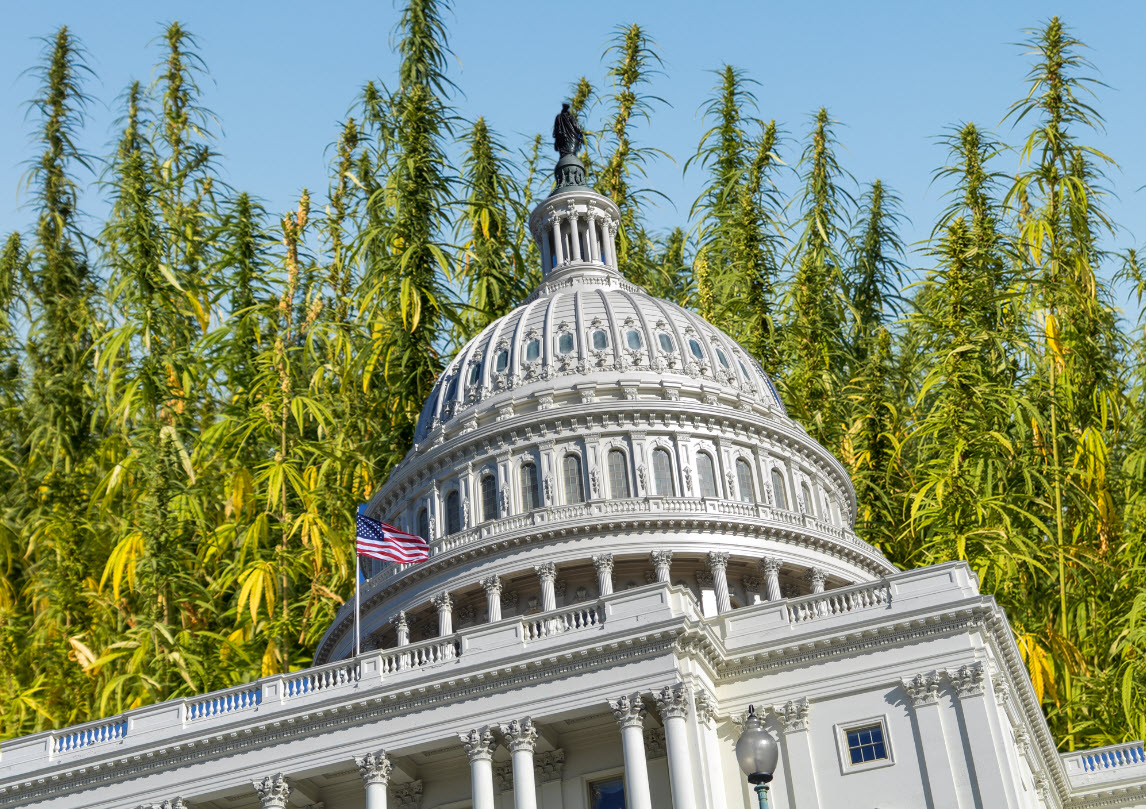
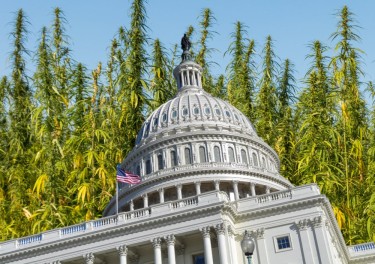
Why Does the U.S. Government Hate Freedom?
This is the question I find myself asking as I witness representatives in Congress raging about “closing the loophole” when it comes to legal hemp-derived psychoactive cannabinoids like Delta-8 THC, THCa, and others. It seems that our elected officials are more interested in restricting personal liberties than embracing the potential benefits of a thriving industry.
For the past six years, the United States has experienced a form of national cannabis legalization, though most people were unaware of it.
Thanks to the 2018 Farm Bill, hemp-derived psychoactive cannabinoids have allowed virtually every state to have some sort of legal cannabis products available in stores. This has been a game-changer for consumers and entrepreneurs alike.
However, now Congress aims to kill this $28 billion per year industry, rather than acknowledging that cannabis legalization, despite limited regulation, did not bring about the end of the world. In fact, it has created jobs, generated tax revenue, and provided countless individuals with access to alternative wellness options.
In this article, we will explore why the U.S. government seems to hate freedom and innovation, and why it’s crucial that you begin to vote out these dinosaurs who are holding us back.
The majority of Americans want legal access to cannabis, but the government remains woefully out of touch with the will of the people.
When most people think of the “unregulated cannabis market,” they often picture the illicit, black market trade. However, they would be mistaken. In reality, the hemp-derived cannabis marketplace has been the one operating largely unregulated for the past six years, much to the chagrin of the FDA and the U.S. government.
This unregulated market has flourished, growing into a staggering $28 billion per year industry. Hemp-derived psychoactive cannabinoids, such as Delta-8 THC and THCa, have become widely available, with products frequently found in head shops across the United States and even in neighboring countries like Mexico.
Essentially, this unregulated cannabis market has thrived without significant government intervention. Entrepreneurs have seized the opportunity created by the 2018 Farm Bill to innovate and meet consumer demand, all while operating in a legal gray area.
However, this booming industry is now seen as a threat by both legal cannabis companies operating within state-regulated systems and the government itself. Legal cannabis businesses argue that the unregulated hemp-derived market is cutting into their profit margins, as consumers opt for more readily available and often cheaper alternatives.
Meanwhile, government officials, likely influenced by lobbyists from the regulated cannabis industry, are seeking to put an end to this unregulated market. They claim concerns over safety and the lack of oversight, but it’s hard to ignore the financial motivations at play.
This brings us to the current situation, where a bill is floating through Congress that could severely restrict these hemp-derived cannabinoids and essentially wipe out an entire industry overnight. If passed, this legislation would redefine the legal status of these compounds, making them illegal under federal law.
The potential ramifications of this bill are immense. It would not only destroy a multibillion-dollar industry and eliminate countless jobs but also deprive consumers of access to products they have come to rely on. It’s a stark reminder of how quickly the government can intervene and disrupt entire markets, especially when powerful interests are at stake.
As we continue to examine this issue, it’s essential to consider the broader implications of the government’s actions. Is this really about public safety, or is it a blatant attempt to protect the profits of a select few at the expense of consumer choice and free-market innovation? The answer to that question may determine the future of the hemp-derived cannabinoid industry and the wider fight for cannabis legalization in the United States.
How to make hemp derived psychoactive THC
How to Make Psychoactive Hemp THC
To understand the current controversy surrounding hemp-derived psychoactive cannabinoids, it’s essential to grasp the differences between typical cannabis and hemp-derived THC products.
Traditional cannabis, often referred to as marijuana, contains a high concentration of delta-9-THC, the primary psychoactive compound responsible for the “high” associated with cannabis use. Hemp, on the other hand, is legally defined as cannabis plants containing less than 0.3% delta-9-THC by dry weight.
However, hemp plants still contain other cannabinoids, such as CBD, delta-8-THC, and THCa, which can be extracted and processed to create psychoactive products. The process of obtaining these compounds isn’t always naturally derived; it often requires additional steps and specific chemical processes.
For example, delta-8-THC is typically synthesized from CBD through a chemical reaction involving solvents and acids. This process alters the molecular structure of CBD, converting it into delta-8-THC, an isomer of delta-9-THC with similar psychoactive properties.
Despite the differences in production methods, the chemical structures of hemp-derived THC compounds are nearly identical to those found in traditional cannabis.
This means that the effects experienced by users are quite similar, although some cannabis enthusiasts argue that delta-8-THC produces a milder, more clear-headed high compared to delta-9-THC.
Nonetheless, the emergence of hemp-derived psychoactive products has provided a glimpse into what true cannabis legalization could look like. These products have been widely available, offering consumers a legal alternative to marijuana in states where recreational use remains prohibited.
The success of the hemp-derived THC market demonstrates that people are ready for a more open and accessible approach to cannabis. It has shown that legalization doesn’t necessarily lead to the doomsday scenarios often portrayed by opponents, such as increased crime rates or widespread addiction.
Instead, the unregulated hemp-derived THC industry has highlighted the potential benefits of a free and open cannabis market, including job creation, economic growth, and the availability of alternative wellness options for consumers.
As the government seeks to clamp down on this industry, it’s crucial to recognize that the genie is already out of the bottle. Consumers have experienced the benefits of legal access to psychoactive cannabinoids, and they are unlikely to accept a return to the days of strict prohibition.
Rather than attempting to suppress this market, policymakers should focus on creating sensible regulations that prioritize consumer safety, product quality, and responsible use. This approach would not only protect public health but also foster innovation and economic opportunity within the cannabis sector.
The rise of hemp-derived psychoactive cannabinoids has provided a tantalizing preview of what true cannabis legalization could achieve.
As the debate over the future of this industry continues, it’s essential to keep sight of the bigger picture: the need for a rational, evidence-based approach to cannabis policy that respects individual freedom and promotes the well-being of society as a whole.
The rise of the hemp-derived psychoactive cannabinoid industry has provided us with a unique opportunity to witness the effects of cannabis legalization in action. Over the past six years, this unregulated market has thrived, offering consumers access to legal, psychoactive cannabis products and demonstrating the potential benefits of a more open approach to cannabis policy.
Despite the lack of strict regulations, the sky hasn’t fallen. Society hasn’t crumbled under the weight of widespread cannabis use. Instead, we’ve seen the emergence of a vibrant, multibillion-dollar industry that has created jobs, generated tax revenue, and provided people with alternative options for relaxation and wellness.
This experience should serve as a wake-up call to policymakers and the public alike. It’s time to acknowledge that the current system of cannabis prohibition is broken and that a new approach is needed. The solution is clear: we must completely deschedule cannabis at the federal level and allow states to establish their own regulatory frameworks.
By removing cannabis from the list of controlled substances, we can finally begin to treat it like any other commodity. This will open the door to a new era of innovation, entrepreneurship, and economic growth, as businesses and investors flock to the cannabis sector.
Moreover, descheduling cannabis will enable us to embrace new market norms and adapt to the changing preferences of consumers. As the hemp-derived THC market has shown, Americans are ready and willing to incorporate cannabis into their daily lives, just as they do with alcohol or tobacco.
In fact, recent studies have indicated that Americans now consume cannabis on a daily basis more frequently than they drink alcohol. This shift in behavior reflects a growing acceptance of cannabis as a normal part of adult life, and it’s time for our laws and policies to catch up with this reality.
The bottom line is that cannabis is here to stay, and it’s up to us to decide how we want to approach it as a society.
We can either continue down the path of prohibition, wasting resources on enforcement and criminalization, or we can embrace the opportunities presented by legalization.
By choosing the latter, we can create a safer, more equitable, and more prosperous future for all. We can establish a well-regulated cannabis market that prioritizes public health, social justice, and economic growth, while also respecting the individual rights and freedoms of consumers.
The hemp-derived psychoactive cannabinoid industry has given us a glimpse of what this future could look like. Now, it’s up to us to make it a reality. It’s time to deschedule cannabis, embrace new market norms, and welcome the cannabis revolution with open arms.
THE END OF HEMP IN AMERICA, READ ON…
Cannabis News
To THCA or Not to THCA, That is the Question
Published
2 days agoon
May 31, 2024By
admin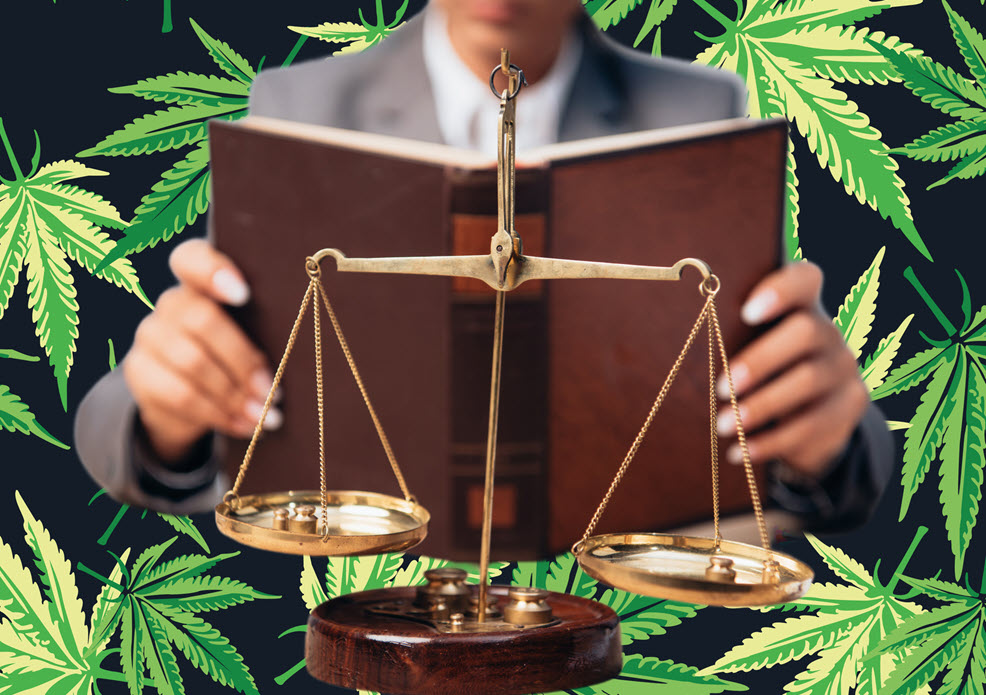
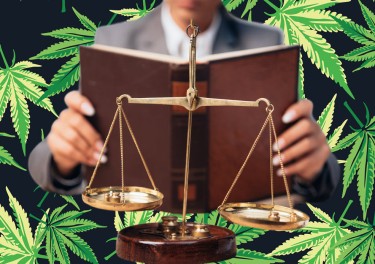
The Drug Enforcement Administration (DEA) recently explained that the cannabinoid THCA must be included when calculating THC levels to meet the legal definition of hemp, according to the 2018 Farm Bill. In a letter dated May 13, Terrence Boos, the head of the DEA’s drug and chemical evaluation section, clarified that THCA, which turns into delta-9 THC when heated, must be included in THC concentration calculations. This clarification has caused concerns in the hemp industry, which worries about new compliance challenges.
In his letter, Boos detailed that the legal limit of 0.3% delta-9 THC applies not only to delta-9 THC itself but also to THCA after it is heated and converted. This means that cannabis-derived THCA cannot be considered hemp under the Controlled Substances Act (CSA). This clarification was reported by Marijuana Moment.
The DEA’s response came after cannabis lawyer Shane Pennington asked for more information regarding the issue. This decision comes at a time when Congress is reviewing regulations of cannabinoids in the Farm Bill.
Industry Concerns and Reactions
The new interpretation has caused anxiety among hemp industry producers due to the difficulties they may encounter in meeting legal THC requirements, as they will now have to also consider THCA content. This could mean more testing and potential legal issues related to the use of hemp and its products in the future.
While Congress is in the process of discussing improvements to the Farm Bill, the industry is paying attention to the potential changes in the regulation of these practices and how it could impact their activities.
Industry groups, such as the U.S. Hemp Roundtable, have strongly opposed this new interpretation. Jonathan Miller, the group’s general counsel, warned that it could destroy the hemp industry. He explained that most hemp farmers would fail to meet these new guidelines. Miller urged supporters to ask lawmakers to reject the amendment.
Shawn Hauser, co-chair of Vicente LLP’s hemp and cannabinoids practice, also weighed in. She noted that the Farm Bill requires THC testing before harvest, including THCA. Hauser explained that a plant with high THCA likely exceeds the legal THC limit, making it unlawful. This new interpretation has created confusion for businesses and state regulators.
These concerns highlight the potential impact of the DEA’s clarification. If the amendment passes, many hemp farmers might struggle to comply, leading to significant changes in the industry. Industry stakeholders are closely watching the situation and urging legislative action to prevent the amendment from being approved.
Congress Debates The Prohibition of Hemp-Derived Cannabinoids
The DEA’s letter about THCA comes at a time when federal lawmakers are rethinking hemp and cannabinoid regulations under a new version of the Farm Bill. Recently, a key House committee approved an amendment that would ban most hemp-derived cannabinoids, including delta-8 THC. This amendment, introduced by Rep. Mary Miller (R), suggests that cannabinoids made or processed outside the plant would no longer qualify as legal hemp.
Some groups, like the U.S. Cannabis Council (USCC), support tougher rules on intoxicating hemp products. The USCC, which includes major companies like Curaleaf Holdings, Canopy Growth, Cresco Labs, MariMed, Acreage Holdings, Verano Holdings, Dutchie, and Pax Labs, argues for uniform safety standards to protect consumers.
However, other industry voices express concern that these strict measures might unintentionally make non-intoxicating CBD products illegal. Many of these products contain small amounts of THC, which could fall afoul of the new regulations. This concern is highlighted by Marijuana Moment, emphasizing the potential risk to the broader hemp industry.
As lawmakers debate these changes, the industry is watching closely. The outcome could significantly affect hemp farmers, businesses, and the availability of CBD products. Industry stakeholders are urging careful consideration to avoid unintended consequences that could harm the sector.
Curaleaf’s Stance On The Amendment of Miller’s Farm Bill
Meanwhile, Curaleaf Holdings, the largest cannabis company in the U.S., has recently entered the market for hemp-derived THC products and voiced its concerns about proposed legislative changes. Boris Jordan, the executive chairman of Curaleaf, spoke out against the Miller amendment to the Farm Bill, which seeks to limit hemp-derived cannabinoids like delta-8 THC.
Jordan stated, “We disagree with the amendment introduced by Mary Miller (R-IL), which attempts to reverse the progress made by the Farm Bill. We support hemp farmers and believe that products made from hemp within the Farm Bill’s guidelines should be available to adults, with strict age restrictions and safety standards.
There should be a single regulatory framework for all cannabinoids, ensuring that all legal players in the hemp-derived product market follow the same safety and age restrictions. This is essential to combat the dangers posed by the illicit market, just as we do in the cannabis industry.”
Curaleaf’s position emphasizes the need for consistent regulations to support the legal market and protect consumers. The company argues that fair and uniform standards are necessary to ensure safety and to help legitimate businesses thrive while preventing illegal activities. The debate over these regulations is critical for the future of the hemp industry and its ability to innovate and provide safe products to consumers.
Conclusion
The debate over hemp-derived cannabinoids, including THCA and delta-8 THC, highlights significant concerns within the industry. The DEA’s clarification and the proposed Miller amendment to the Farm Bill have sparked fears of stricter regulations that could impact hemp farmers and businesses. Curaleaf Holdings, a major player in the cannabis market, strongly opposes these changes, advocating for consistent regulations that support both safety and innovation.
Boris Jordan, Curaleaf’s executive chairman, argues for a single regulatory framework for all cannabinoids, emphasizing the need for strict age restrictions and safety standards to protect consumers and combat the illicit market. This unified approach aims to create a fair playing field for legal businesses while ensuring product safety.
As lawmakers reconsider hemp regulations, the outcome will be crucial for the industry’s future. Ensuring balanced and consistent regulations is key to supporting the legal market, protecting consumers, and fostering innovation within the hemp and cannabis sectors.
FARM BILL LOOPHOLES GALORE, READ ON…
0.3% BY NET WEIGHT, THE GREATEST LOOPHOLE IS DRUG LAW HISTORY?

Forget Croptober – How to Grow Cannabis So You Can Crop Plants 12 Months a Year

The Government Wants to Kill the US Weed Industry

Hemp Today Report: Region in southern Uruguay forging a model supply chain for hemp food products

4 Ways Marijuana Can Help In A Messy Break Up

Medical Marijuana Is About To Have A Big Positive Change
Vermont Governor Signs Bill To Create Psychedelics Work Group, But Vetoes Drug Overdose Prevention Site Measure

What To Do If Smoking Marijuana Irritates Your Throat

To THCA or Not to THCA, That is the Question

Star signs and cannabis strains: May 2024 horoscopes

How Do You Order Magic Mushroom Gummies?

Distressed Cannabis Business Takeaways – Canna Law Blog™

United States: Alex Malyshev And Melinda Fellner Discuss The Intersection Of Tax And Cannabis In New Video Series – Part VI: Licensing (Video)

What you Need to Know

Drug Testing for Marijuana – The Joint Blog

Cannabis, alcohol firm SNDL loses CA$372.4 million in 2022

NCIA Write About Their Equity Scholarship Program

City Of Oakland Issues RFP For Employee Training Programs

It has been a wild news week – here’s how CBD and weed can help you relax

A new April 20 cannabis contest includes a $40,000 purse

Your Go-To Source for Cannabis Logos and Designs
Trending
-

 Cannabis News1 year ago
Cannabis News1 year agoDistressed Cannabis Business Takeaways – Canna Law Blog™
-

 One-Hit Wonders1 year ago
One-Hit Wonders1 year agoUnited States: Alex Malyshev And Melinda Fellner Discuss The Intersection Of Tax And Cannabis In New Video Series – Part VI: Licensing (Video)
-

 Cannabis 1011 year ago
Cannabis 1011 year agoWhat you Need to Know
-

 drug testing5 months ago
drug testing5 months agoDrug Testing for Marijuana – The Joint Blog
-

 Marijuana Business Daily1 year ago
Marijuana Business Daily1 year agoCannabis, alcohol firm SNDL loses CA$372.4 million in 2022
-

 Education1 year ago
Education1 year agoNCIA Write About Their Equity Scholarship Program
-

 Education1 year ago
Education1 year agoCity Of Oakland Issues RFP For Employee Training Programs
-

 Cannabis1 year ago
Cannabis1 year agoIt has been a wild news week – here’s how CBD and weed can help you relax






